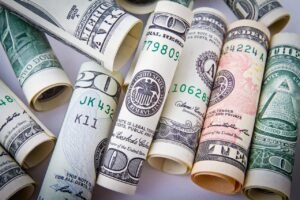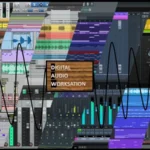Are you a passionate music producer looking to turn your beats into a profitable venture? Selling beats online has become an increasingly lucrative opportunity for creators to monetize their skills and reach a wider audience.
With the right strategies and platforms, you can showcase your beats to potential buyers, build a strong brand presence, and maximize your earning potential. This comprehensive guide will walk you through the essential steps, from crafting professional-quality beats to choosing the best selling beats online platforms, pricing and licensing models, and effective marketing techniques. Get ready to unlock the secrets of how to sell your beats successfully and turn your passion into a sustainable income stream.
Crafting Professional Beats
To craft professional-quality beats, you’ll need the right tools and a solid understanding of the beat-making process. Here’s what you need to get started:
Essential Hardware and Software
- A computer or laptop with sufficient memory and disk space
- A Digital Audio Workstation (DAW) software like FL Studio to record, edit, mix, and master beats
- A sequencer to program drum patterns and other instrument parts
- A library of samples, loops, and sounds to use in beat-making
- A MIDI controller for playing instruments
- High-quality headphones and/or speakers for monitoring
The Beat-Making Process
- Set the tempo and vibe (BPM, major/minor key, instruments, etc.) based on the desired genre and emotion.
- Sequence the drum pattern as a foundation.
- Build out chord progressions.
- Add a memorable melody.
- Create a bass line.
- Incorporate samples and sound effects.
- Arrange the beat into a structured song format (intro, verse, hook, outro).
Becoming a great beat maker takes time and dedication. Dedicate 10,000 hours of practice to hone your skills. As you progress, focus on making your beats sound professional and finding your niche style. Create high-quality, professional-sounding beats, price them competitively, and promote them heavily on social media, YouTube, and other online platforms. You can also create remixes and lofi beat videos on YouTube to build your profile.
The key to crafting professional beats is mastering the tools, understanding the beat-making process, and continuously refining your skills through practice and experimentation.
Where to Sell Beats ?
When it comes to choosing a platform to sell your beats, you have several options to consider. Here’s a breakdown of some popular choices:
Your Own Website
Selling beats on your own website is considered the best way as you retain full control and keep all the revenue. You can collect customer emails, sell related products, and build your brand more effectively. Services like Sellfy allow you to set up an online store, upload your products, and customize your storefront.
Airbit
One of the most popular beat marketplaces, Airbit boasts over 800,000 users and has sold over 2 million beats to artists like Eminem, Beyonce, Migos, and Wiz Khalifa. It offers free and paid plans, with paid plans allowing unlimited beat uploads and $100 in promo credits, without charging any commission fees.
Beatstars
Similar in popularity to Airbit, Beatstars has facilitated over $100 million in sales by creators. It offers free and paid plans, with 0% commission on the paid plans.
Other Marketplaces
- AudioJungle (part of Envato Market) allows selling beats and other audio files like sound effects, providing a large user base and good discoverability.
- PremiumBeat allows selling beats to Shutterstock’s user base, but requires beats to be completely unique and you must provide exclusive access.
- Bandcamp is a music community platform that allows selling beats and other music, with artists keeping 85% of revenue after Bandcamp’s 15% share.
- TrakTrain, Audiodraft, Soundee, Soundclick, Soundgine, and GoBuyBeats are other platforms to consider.
It’s worth noting that while platforms like BeatStars are great for displaying your beats, they are not recommended for selling leases. Ultimately, the choice of platform will depend on factors like your goals, target audience, and the level of control and customization you desire.
Pricing and Licensing Strategies
When it comes to pricing your beats, it’s crucial to strike a balance between fair compensation and market competitiveness. For non-exclusive MP3 leases, the industry standard is around $25, while premium non-exclusive WAV leases typically range from $25 to $50. If you’re offering exclusive licenses, you can command higher prices, with many producers charging $150 or more per beat.
However, pricing strategies can vary significantly based on your target audience and career stage. For entry-level producers aiming to sell beats to independent artists, a reasonable price point is around $3,000 per beat. On the other hand, if you’re targeting major label artists, you can expect to fetch higher prices, with industry experts suggesting $7,500 to $10,000 per beat for new producers and $10,000 or more for established beat makers.
When setting your prices, it’s essential to consider factors such as:
- License Type: Exclusive licenses command higher prices than non-exclusive licenses, as they grant the buyer full ownership and rights to the beat.
- Target Market: Major label artists and established musicians are typically willing to pay more for high-quality beats than independent or up-and-coming artists.
- Experience Level: As you gain more experience and build a reputation in the industry, you can command higher prices for your beats.
- Additional Services: Offering additional services like custom beat creation, mixing, and mastering can justify higher price points.
To maximize your earning potential, consider implementing the following strategies:
- Offer Bulk Deals and Volume Discounts: Incentivize customers to purchase multiple beats by offering discounted rates for bulk purchases.
- Test Different Pricing Tiers: Experiment with different pricing structures, such as removing the cheapest license option, to encourage customers to opt for higher-priced tiers.
- Use Template Agreements and Contracts: When selling exclusive or lease beats, use template agreements or contracts to clearly outline the terms, rights, and percentages involved.
- Build a Prestigious Brand: Focus on building a strong brand and cultivating a high-value customer base, rather than relying solely on high-volume beat leasing.
Remember, pricing is an ongoing process of trial and error. Continuously monitor market trends, gather feedback from customers, and adjust your pricing strategies accordingly to ensure you’re maximizing your earning potential while providing fair value to your clients.
Marketing and Promotion
Effective marketing and promotion are crucial for maximizing your reach and earning potential as a beat seller. Here are some proven strategies to consider:
Leverage Online Marketing Channels
- Utilize social media platforms like Instagram, Twitter, and YouTube to showcase your beats and build an engaged following.
- Optimize your content for search engines (SEO) by incorporating relevant keywords and descriptions.
- Promote your beats on popular beat marketplaces like BeatStars, Airbit, and Soundee to tap into their existing user base.
Build a Strong Brand Presence
- Create micro-content, such as beat-making videos, to give your audience a behind-the-scenes look at your creative process.
- Maintain an active presence on social media, consistently sharing updates, new releases, and engaging with your followers.
- Develop a professional website with an audio player, beat summaries, and an email signup form to capture leads.
Implement Email Marketing Strategies
- Build a targeted email list of potential customers, including rappers, music executives, and industry professionals.
- Craft personalized cold emails with an icebreaker, unique value proposition, social proof, and a clear call-to-action.
- Attach your beat as an MP3 file to track who listens and set up an automated follow-up sequence.
- Offer a lead magnet, such as a free beat or discount, to incentivize email signups.
- Regularly email your past customers with updates, new releases, and special offers.
Optimize Your Online Presence
- Ensure your website is mobile-friendly, as over 55% of website traffic comes from mobile devices.
- Utilize your website’s hero section, sales banners, and popups to highlight special deals or new releases.
- Add an FAQ section to address common questions and reduce confusion for potential customers.
- Collect customer reviews and feedback to improve your marketing and offerings.
Engage in Networking and Collaborations
- Network with artists and industry professionals to get your beats placed in their projects.
- Engage in physical networking events in your local area to connect with potential clients.
- Build online connections through content creation and collaborations with other producers or artists.
Effective marketing and promotion require a multi-faceted approach. Consistently implement these strategies, track your results, and adjust your tactics as needed to maximize your reach and success in selling beats.
Maximizing Earning Potential
The key to maximizing your earning potential as a beat seller lies in a strategic combination of production, publishing, and promotion. While it’s entirely possible to make a living solely from selling beats online through platforms like Beatstars, building a profitable beat-selling business requires time, effort, and realistic expectations.
- Continuous Beat Production: Consistently creating fresh, high-quality beats is crucial to keeping your catalog appealing and generating recurring sales. Assign a unique catalog number or name to each beat to streamline the purchasing process for your buyers.
- Diversify Your Income Streams: In addition to selling beats, consider offering complementary products like drum kits, samples, presets, loops, sound effects, music lessons, and VST plugins to expand your revenue sources.
- Leverage Sampling: While sampling can be a viable way to create unique beats and generate income, it’s essential to properly clear the samples before using them commercially to avoid legal issues.
The beat-selling industry generates over $30 million per year, with top producers earning $30,000 or more annually from selling beats alone. Successful beat makers can make anywhere from a few hundred to several thousand dollars per month, depending on their experience, marketing efforts, and the quality of their offerings. However, it’s important to maintain realistic expectations, as building a profitable beat-selling business takes time and consistent effort.
In most cases, you don’t need a business license to sell beats online, but it’s advisable to check your local regulations to ensure compliance. By continuously creating high-quality beats, diversifying your income streams, and implementing effective marketing strategies, you can unlock the full potential of your passion and turn your beat-making skills into a sustainable and lucrative career.
FAQs
How much income can you generate by selling beats?
The amount you can earn from selling beats varies. Typically, a non-exclusive instrumental beat can be priced between $25 and $100, whereas exclusive beats may start at $300 or higher. Pricing can also depend on your experience and reputation in the industry.
What are some effective strategies for beginners to sell beats?
Beginners looking to sell beats can follow these strategies:
- Ensure your beats are high quality and ready for sale.
- Develop a dedicated website for your beat making or music production.
- Utilize cold emailing to promote your beats.
- Build and effectively use an email marketing list.
- Engage previous buyers with retargeting lists and automations.
- Leverage social media platforms to enhance your beat sales.
Is selling beats a viable side hustle?
Yes, selling beats can be a lucrative side hustle. There are numerous ways to monetize your beats, including selling rights directly to artists, monetizing through YouTube, and offering production sessions. As your audience grows, monetization opportunities typically increase, making it easier to earn more from your beats.
What pricing strategy should I adopt for my first beat sale?
Pricing for beats can vary widely. Some producers may start by charging as little as $1.99, while others might set prices around $50. As your reputation grows, you can potentially sell beats for $300 to several thousands of dollars. The key is to start at a price point that you feel matches the value you provide and adjust as your market presence expands.
This post may contain affiliate links. If you make a purchase through these links, we may earn a small commission at no additional cost to you.








